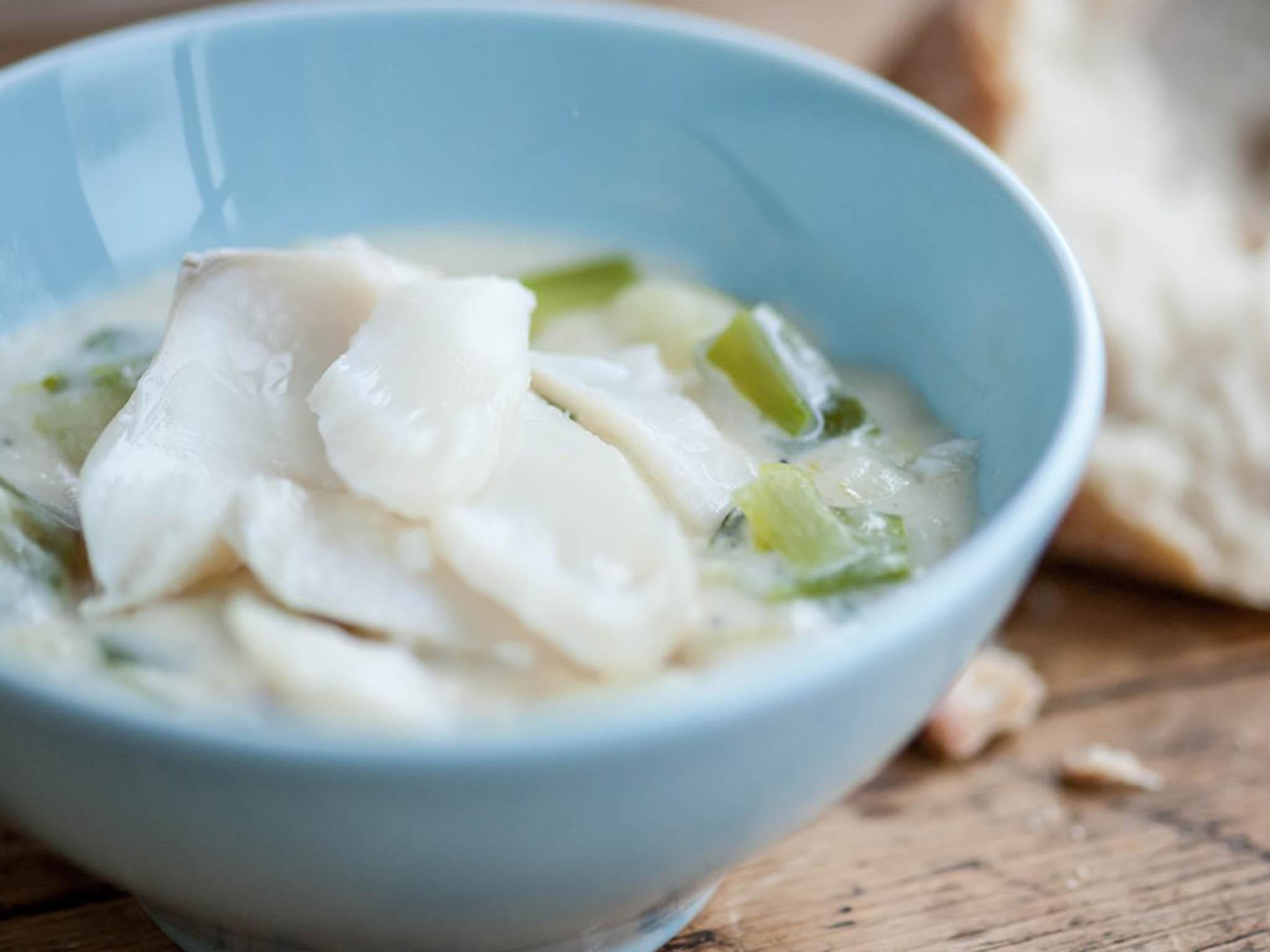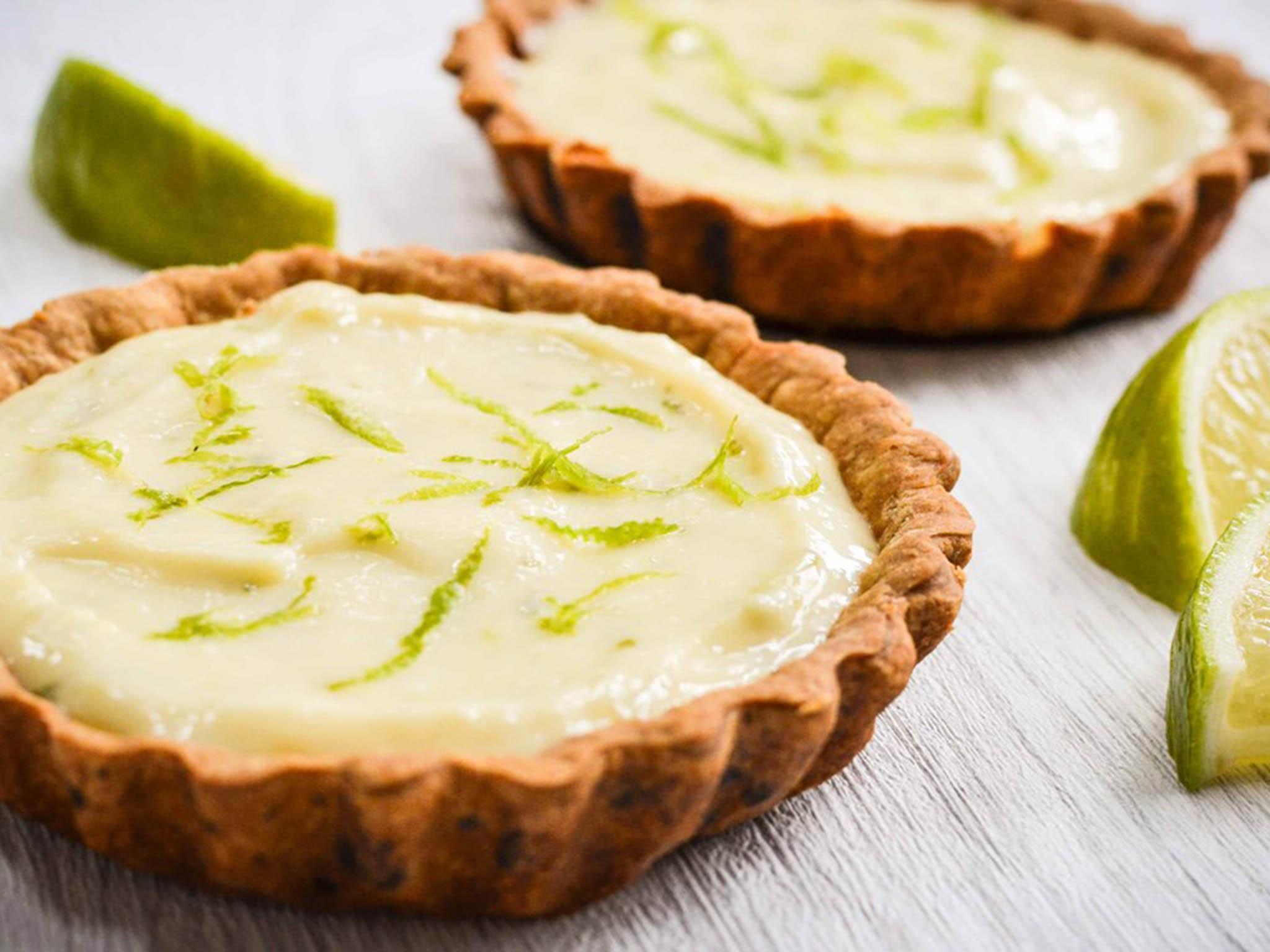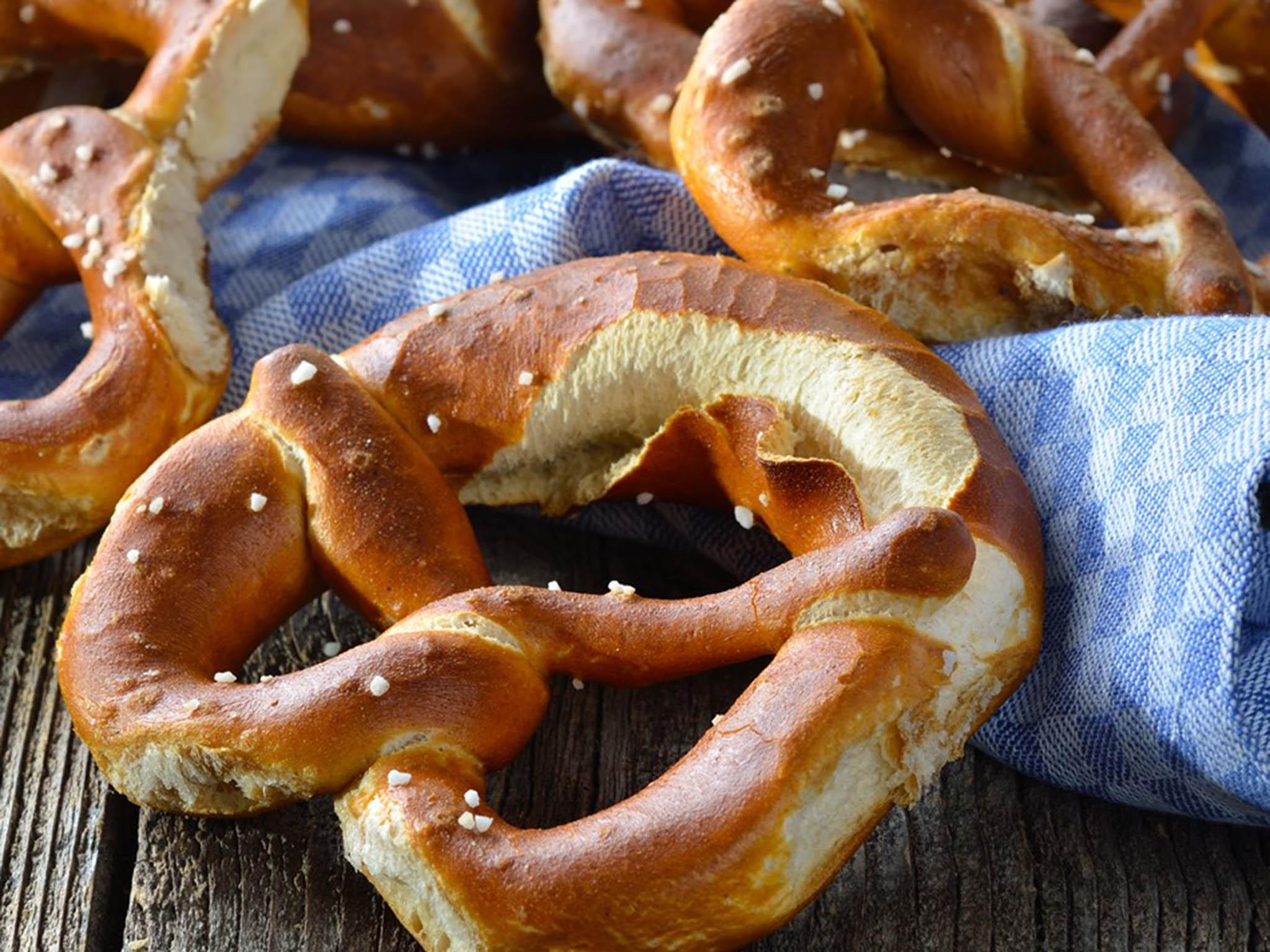American recipes: From smoked haddock chowder to key lime pie

Smoked haddock chowder
Chowder is a creamy stew with a myriad of variations around the world. This elegant haddock chowder recipe from Marcello Tully is devastatingly simple and quick to prepare and even uses "cheat" ingredients like instant mash.
400g of smoked haddock
460ml of milk
36g of onion, finely diced
330g of leek, sliced
130g of potato, diced
2g of nutmeg, ground
265ml of double cream
1 fish stoke cube, dissolved in 500ml of water
50g of instant mash potato
25g of cornflour
Salt
Pepper
Remove the skin of the fish and with tweezers, prise out the bones. Pour the milk into a heavy-based saucepan. Add the fish, bring to the boil and then turn down the heat and simmer gently for 3 minutes. After 3 minutes, remove the fish from the milk and set aside. Place a pan over a low-medium heat and add oil. Once hot, add the onions, leeks and potatoes and sweat for 4-5 minutes. Then, add the milk, fish stock, and ground nutmeg and simmer for 20-25 minutes. Whisk in the instant potato and ensure there are no lumps. Dilute the cornflour with water and then add to the pan, mixing well. Before serving, season with salt and pepper – be careful not to add too much salt as the fish is already salty.

Key lime pie
Inspired by her recent trip to Florida, Urvashi Roe shares her recipe for key lime pie – a classic American dessert made from condensed milk, cream and lime juice. Perfect for a stress-free dinner party dessert, it can be made the day before and set overnight.
Pastry base
100g of unsalted butter, cold and cubed
200g of plain flour
1 egg, beaten
1 tbsp of lime juice
To grease the tins
30g of unsalted butter, melted
Key lime filling
300ml of cream
400g of condensed milk
1 tbsp of lime zest, plus extra to garnish
120ml of lime juice, about 15 key limes or 5 large limes
Icing sugar, optional
To make the pastry, place the flour and cold butter in a food processor and blitz until you have the texture of breadcrumbs. Add the beaten egg and lime juice and blend until a ball of dough forms. Tip out on to a work surface and knead the dough lightly until smooth. Wrap in cling film and place in the fridge to chill for 30 minutes. Preheat the oven to 180°C/gas mark 4 and grease 12 x 8cm loose-bottomed tart tins with the melted butter.
Unwrap the dough and place it on a clean work surface. Roll the pastry into a log shape, then divide it into 12 balls. Roll each ball out to fit the pastry tins and line each one, being careful to press the pastry into the very edges of the tin. Line the tins with cling film, baking paper or foil and fill each with baking beans or dried rice. Blind bake the pastry for 10 minutes then remove the cling film and baking beans and bake for a further 5–7 minutes, or until the pastry is firm and golden brown. Remove the tart cases from the oven and leave to cool while you make the filling
To make the filling, whisk together the cream, condensed milk, lime juice and zest in a bowl. If it tastes too tart you can add some icing sugar at this point to sweeten the mixture slightly. Divide the filling between the tart cases. Garnish with a little lime zest and place in the fridge for at least 2 hours to set.

Pretzels
You don’t have to look further than the nearest street corner in New York City to find a pretzel. Popular all over the US, especially in Philadelphia and Chicago, the pretzel was introduced to America from Germany in the late 18th century. They were an instant hit and have now become fully integrated into American cuisine.
500g of strong bread flour
40g of unsalted butter, softened
7g of fast-action dried yeast
10g of salt
280ml of milk, lukewarm
20g of malt extract
10g of bicarbonate of soda
Rock salt
Make the dough by mixing together the flour, butter, salt and yeast, then add the milk and malt extract. Bring it all together in the bowl then turn it out on to the bench and knead for around 10 minutes until you have a strong elastic dough. Lightly oil a large bowl, put the dough into it and cover with clingfilm. Leave in a warm place to prove until it has doubled in size. This will take approximately an hour. Preheat the oven to 200°C/gas mark 6
Divide the dough into 10 pieces. To form a traditional pretzel shape each piece of dough by rolling them into a long baton roughly 40cm. It should be around 5cm wide in the middle and taper to 1cm wide at the ends. Bring the ends of the dough around in a U-shape, bring the ends in to meet in the middle like a heart and then twist them around each other twice. Secure the ends of the dough to the base of the U leaving a space in the middle so the pretzel has three holes in total. Bring 3 litres of water to the boil with the bicarbonate of soda. Carefully dip each pretzel in the water for 5 seconds. This process will help create the signature dark brown, glossy exterior of the pretzel
Transfer the pretzels to a baking tray and sprinkle with a little rock salt. Make a slash in the thickest part of each one then bake for 20–25 minutes until a deep brown colour. Don’t be tempted to take the pretzels out of the oven too early; they are supposed to be dark brown, this gives them their flavour. Transfer to a wire rack and leave to cool.
These recipe first appeared on Great British Chefs
Join our commenting forum
Join thought-provoking conversations, follow other Independent readers and see their replies
Comments